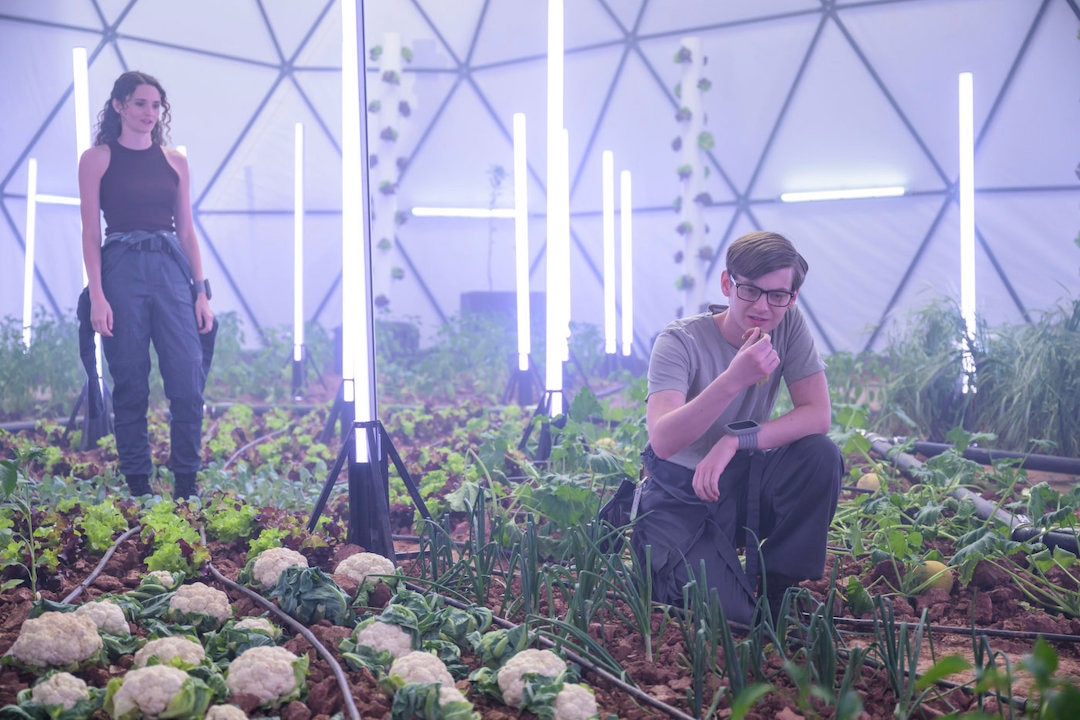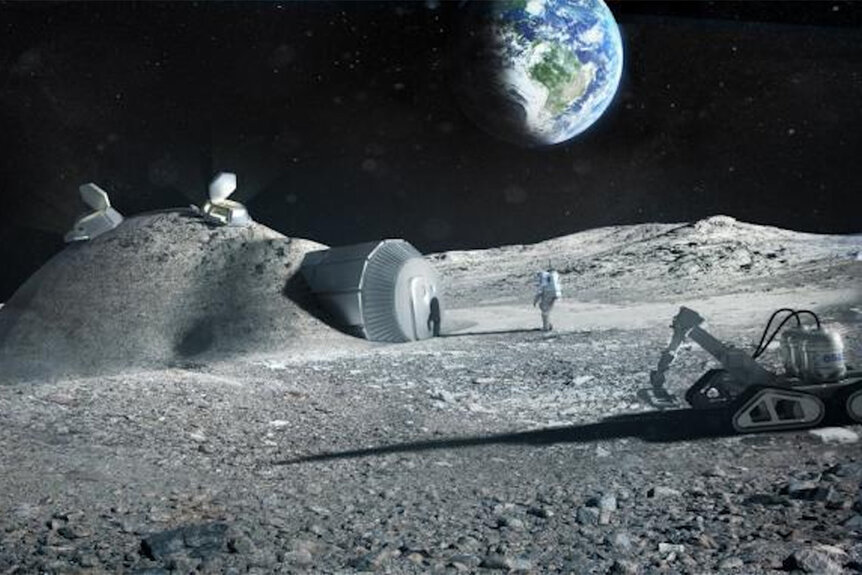Create a free profile to get unlimited access to exclusive videos, sweepstakes, and more!
New lunar farming technique puts us one step closer to growing food in space
Next step: cows. Then, Moon cheese.

In Dean Devlin’s new SYFY series, The Ark, humanity’s last hope is aboard an interstellar vessel bound for a Proxima Centauri b. The plan was for the crew to sleep for the duration, slumbering soundly in specially designed stasis pods, until they disembarked at their new home, but space is a dangerous place. A disaster in route effectively killed part of the crew by breaking them off from the rest of the ship, everyone else woke up. Now they have to survive the ravages of space for a year in order to reach their destination alive.
If you’re planning for your passengers to hibernate the whole way, you don’t pack a lot of snacks. If the crew of the Ark One hopes to survive longer than the short term, they’re going to need to grow some food, but that’s easier said than done. On Earth, growing food is as easy as dropping a seed in the ground. The planet provides all of the sunlight and nutrients a plant needs. All you really have to do is stay out of the way and give them a little water every now and then.
RELATED: 'The Ark" co-creator Dean Devlin says new SYFY series is about 'the triumph of the human spirit'
Our planet is so good at growing things, they’ll pop up where you don’t want them if you’re not vigilant, but that’s only possible thanks to the robust ecosystem which has built up on our planet. The vegetables in your home garden owe as much to the microbes and nutrients found in every handful of soil as they do to you. On a spaceship, the Moon, or another planet, explorers won’t have the benefit of a few billion years of biological activity to keep their plants happy.
Those challenges notwithstanding, humanity is headed back to the Moon fast, and we’re destined for more distant horizons, probably in the not-so-distant future. If we want to make a go of it outside of the cosmic nest, we’re going to need reliable systems for making food. To that end, The European Space Agency (ESA) has partnered with Solsys Mining, a lunar agriculture company based in Norway, to figure out ways to turn lunar soil into fertilizer for growing food in space.
The project is based on prior research which used lunar regolith recovered by Apollo astronauts to grow thale cress in the lab. Scientists succeeded in growing the hardy plants in a substrate made of lunar soil mixed with a cocktail of water and nutrients, but they didn’t grow as well and weren’t as healthy as controls.
That initial study proved that plants could be grown using lunar regolith as a growth medium, provided they were given the nutrients and water they need. It also showed there was room to grow, if you’ll pardon the pun. One of the major challenges scientists encountered is that lunar soil packs tightly when wet, making it difficult for plants to take root. Otherwise, lunar soil is a good source of nutrients for growing plants, lacking only nitrogen in sufficient quantities. Lunar astronauts will find themselves surrounded by an endless sea of Moon dirt that they aren’t able to use — or at least not as well as they’d like — because it doesn’t play well in a pot.
RELATED: Lunar horticulture: plants grown in lunar “soil” for the first time
ESA’s new project seeks to have the best of both worlds, literally, by pulling nutrients out of the lunar soil and using them as fertilizer in a hydroponic system, which would allow plants to grow more freely. The current proposal involves a mechanical sorting area on one end which would pick out bits of lunar dirt and pass them on to a central processing unit. There, the nutrients would be leeched out of the soil before being dissolved in water and pumped into a hydroponic garden.
“This work is essential for future long-term lunar exploration. Achieving a sustainable presence on the Moon will involve using local resources and gaining access to nutrients present in lunar regolith with the potential to help cultivate plants. The current study represents a proof of principle using available lunar regolith simulants, opening the way to more detailed research in the future,” said ESA materials and processes engineer Malgorzata Holynska, in a statement.
Already, the team at Solsys have succeeded in growing beans using simulated lunar regolith. Next steps will involve testing the system with the real thing and, finally, the Moon!
Hopefully we nail down our interplanetary farming techniques before we set sail for another star. In space, anything that can go wrong, will. The Ark airs Wednesdays at 10 p.m. ET on SYFY, and streams on Peacock the next day!































